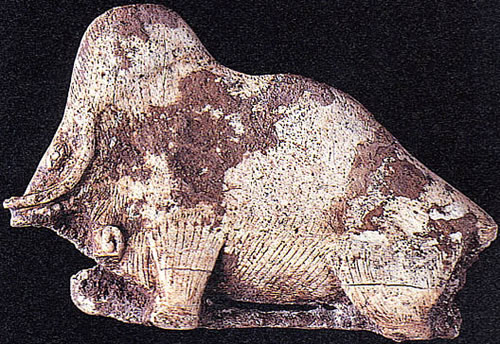
Image: Duncan Caldwell
Andrew Howley of National Geographic has the full story.Perhaps the most dramatic candidate for a mammoth-bison image meeting this requirement and being an intentional illusion isn’t on a cave wall, but on a carving from a spear-thrower from the site of Canecaude. In this piece, as Caldwell sees it, it’s not that the animals share a contour or a few lines, but that just two small details allow the entire image to be read as either of the two species, and seeing one causes the other to "disappear."
The details in question are the eyes. Caldwell describes how there is "both an upper eye, which turns the crescent beneath it into a tusk, and lower eye, beside the front leg, that transforms the same crescent which we just interpreted as a "tusk", into a bison’s overhead horn." Looking back and forth between the eyes then, we are able to see the entire shape transform from one animal to the other, an effect much more like the classic Gestalt shift of the duck-rabbit.
Significantly, it is hard to think of other reasons for the unusual position of the eyes. First of all, their delicately carved shapes show that they were made intentionally, and are not just accidental markings. Secondly, the details of the body of the animal, its tusk/horns, long hair, and legs are all fairly realistically represented showing the artist’s ability to make an accurate full profile view if desired.

No comments:
Post a Comment